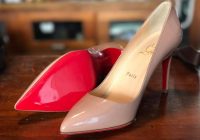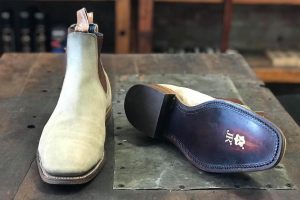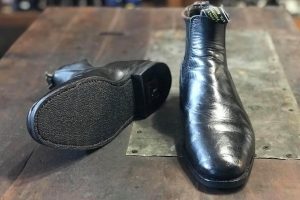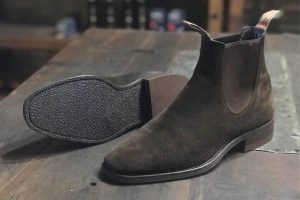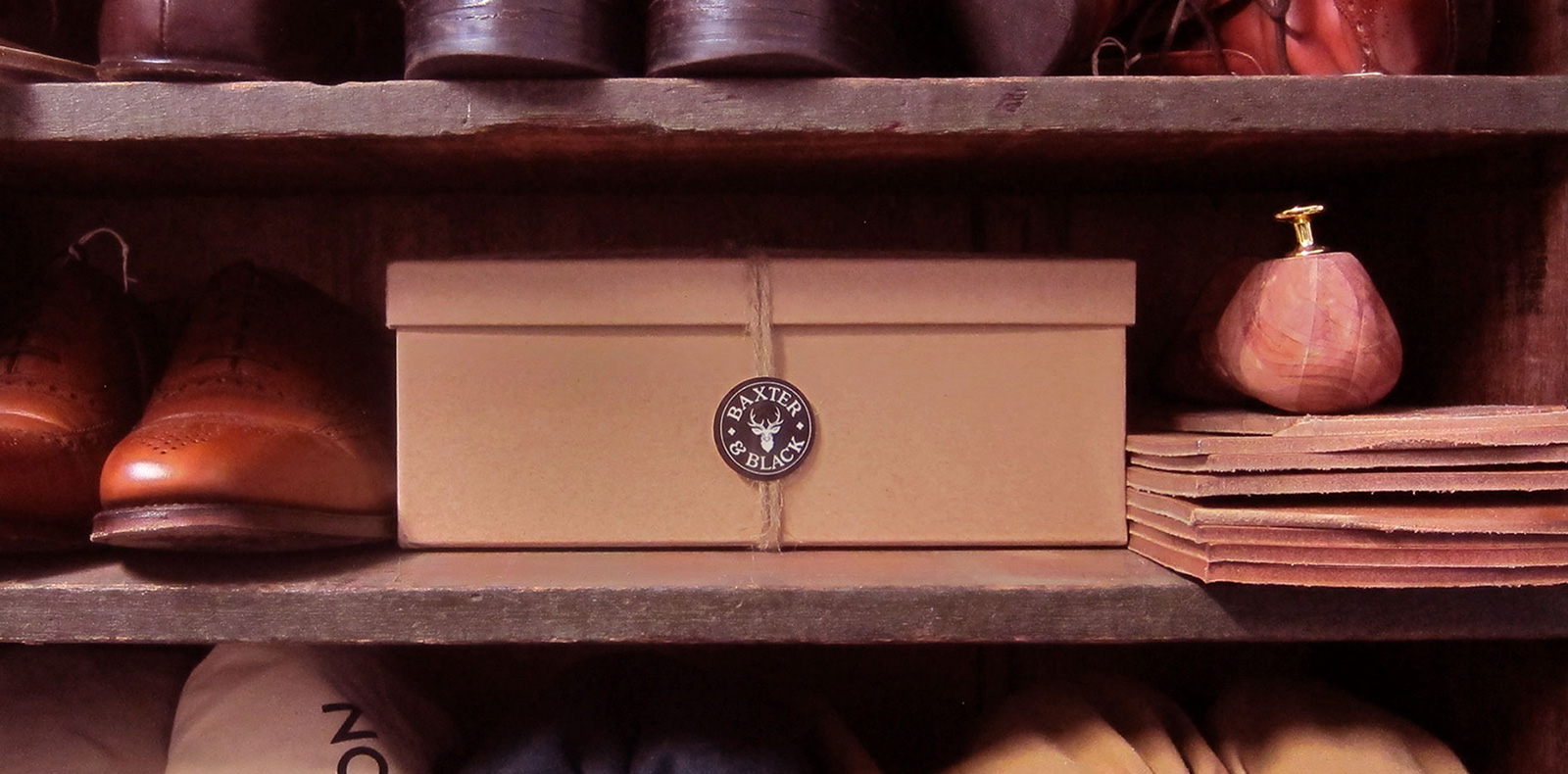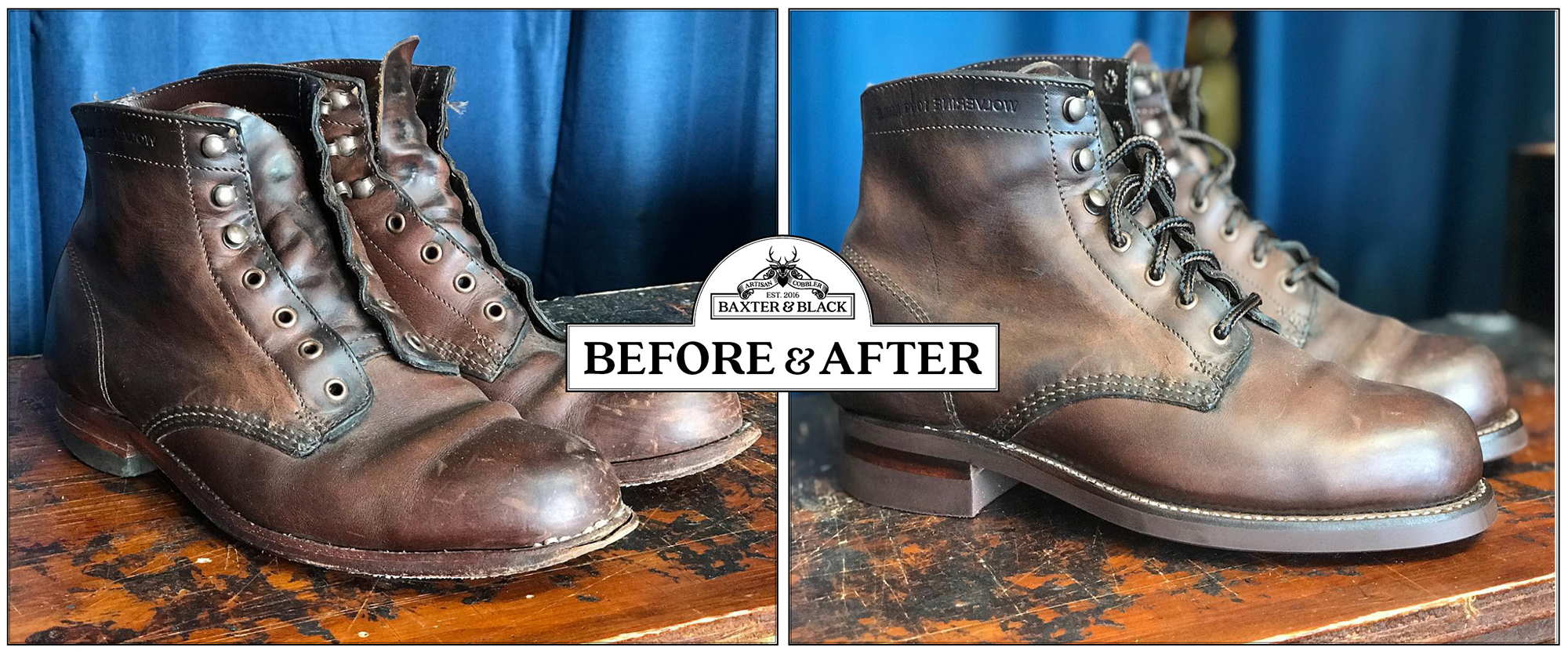
Dr. Sole Nitrile sole and Washer heel on Wolverine boots
Wolverine 1000 mile boots keep on going, but they do need a helping hand with a Dr. Sole heel and sole. We chose the Dr. Sole Nitrile cork sole for its hard-wearing and oil-resisting properties and we teamed the sole up with the matching Dr. Sole washer heel. Because the customer wanted to retain the original leather heel block, we cut down the Dr. Sole washer heel to accommodate, so the boot would still be balanced.
Our Process
- As we were going to re-use these heel blocks we carefully took them off the shoe. We gained access to the old cork by cutting the sole away around the welt line. Additionally, we unpicked all the old welt thread from the top of the welt. We filled the cavity of the Goodyear welted sole with spreadable cork and allowed to rest.
- After this, we roughly scoured and washed the Dr. Sole Nitrile Sole with acetone.
- At this time, the spreadable cork had rested. We applied two separate layers of glue to the bonding surface, allowing time for each layer to dry.
- The acetone wash, having had time to dissipate the surface was then ready for two layers of glue. The two layers of glue achieve a good bond between the new sole and welt area of the boot.
- We heated the glued areas to for a secondary activation. Carefully, we fitted the sole on the boot while paying special attention to centring the logos.
- Our next step was to knife-cut the Dr. Sole Nitrile sole to be flush with the welt edge of the boot. Following the old welt stitch holes, we welt-stitched the boot.
- After this, we marked off, scoured, and glued the area where the recycled heel blocks would sit on the new sole. We then glued the base of the heel block to the sole. We secured the heel block to the shoe with Buttress nails. To ensure a perfect balance in the boot, we cut the washer heel down.
- Precisely, we glued the Dr. Sole Washer Heel to the heel block. The washer heel, heel block, and base of the boot were then secured by clinch nails that are driven through the washer heel holes.
- We then finely sanded and neutrally polished the sole edge and heel block. Additionally, we took out the laces and fitted Saphir shoe trees. Saphir oiled leather cream in medium brown was employed to give the boots a well-deserved condition.
- Finally, with new laces tied up, we checked the balance of the boot. We did a final polish over the whole boot using Saphir Mink Oil Lotion. We achieved a burninshed welt edge and heel block with a bit of Saphir Mink Oil Lotion and cobblers elbow grease.
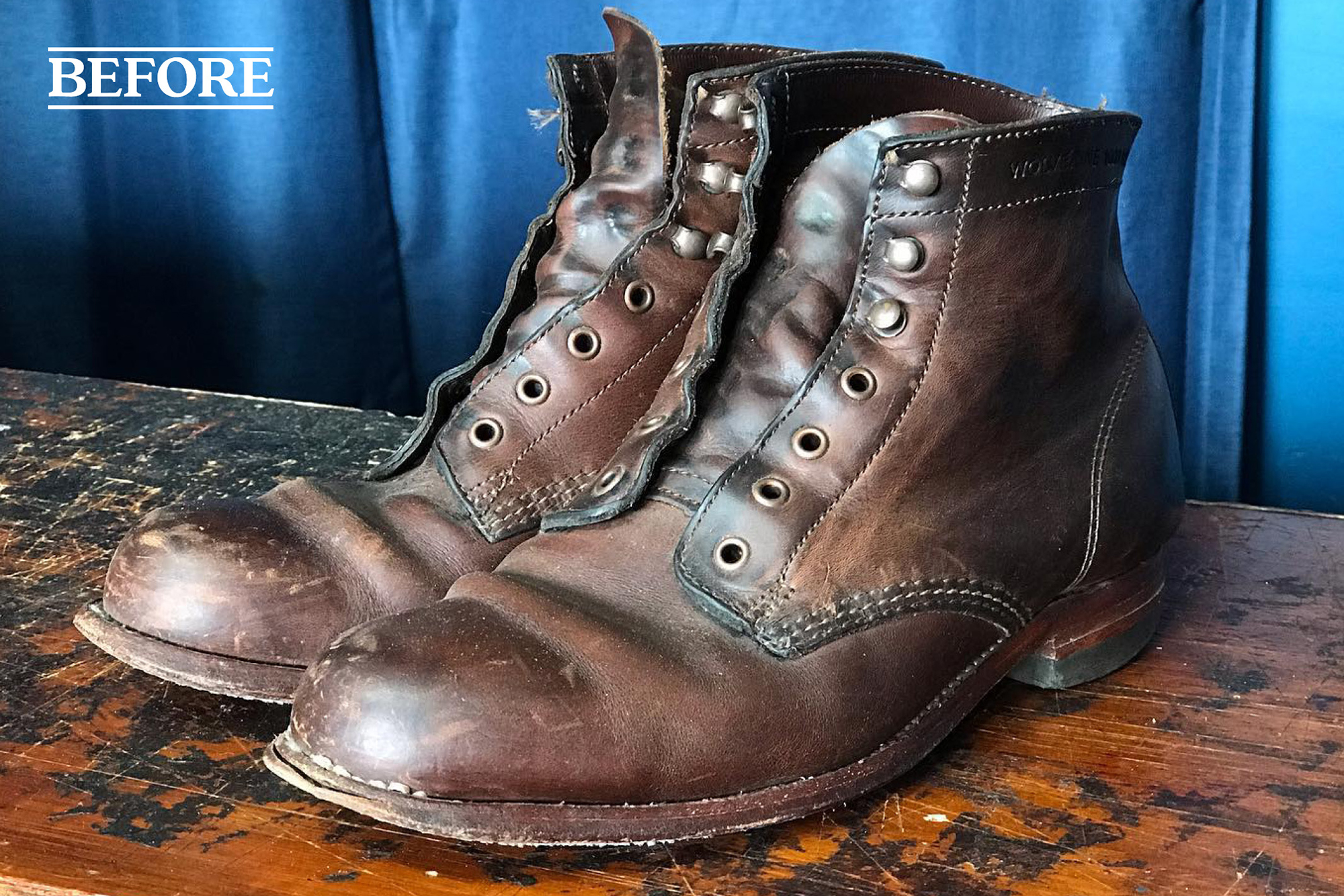
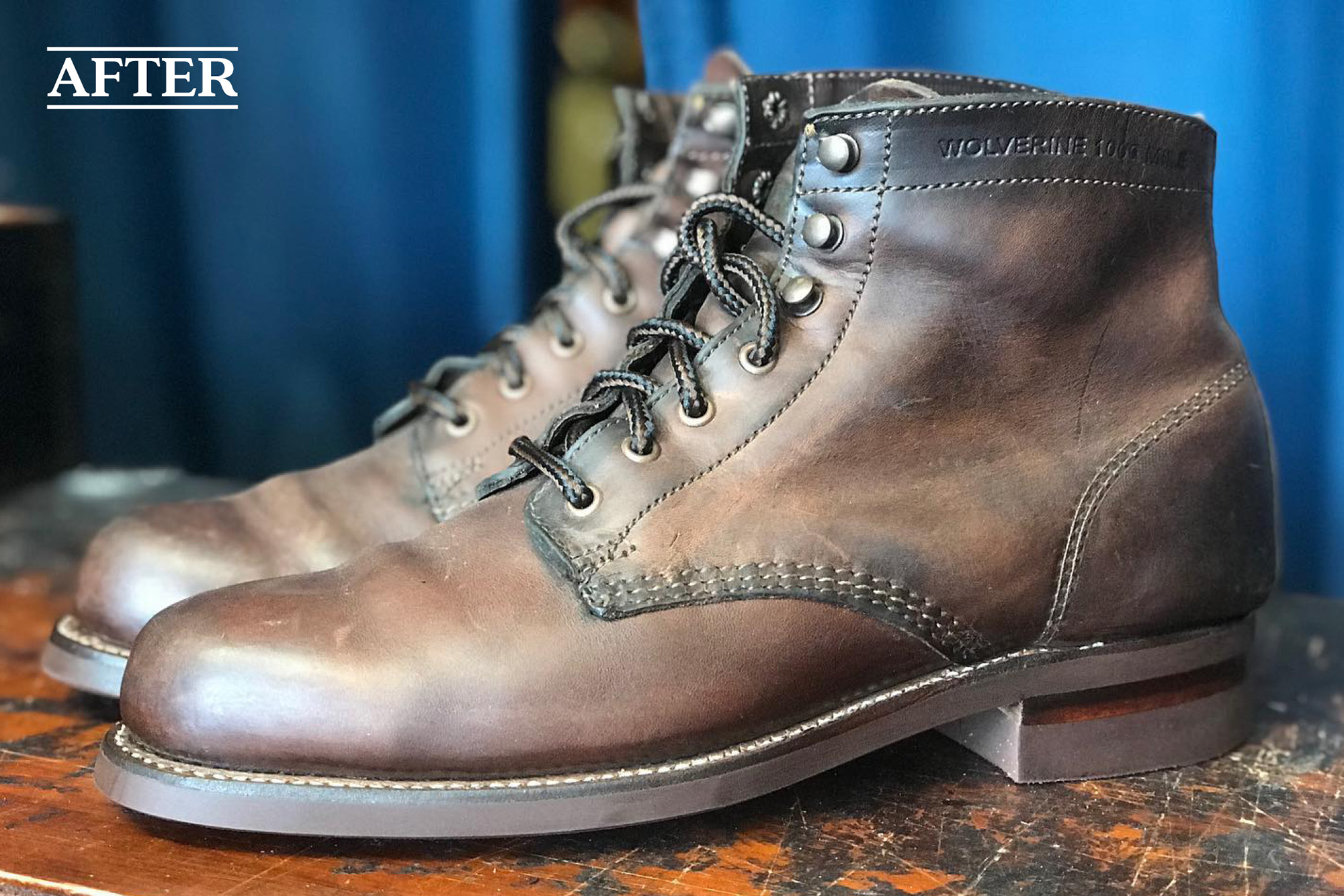
BestBest



